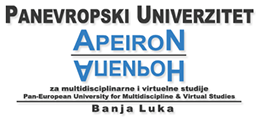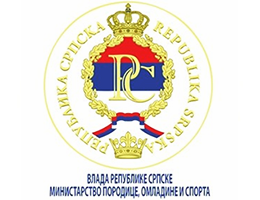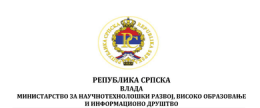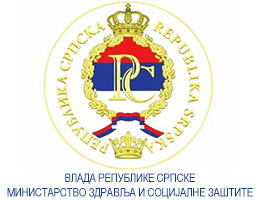Extracurricular Physical Activity of Children of Older School Age and Cardiorespiratory Fitness Level
Volume 4, Issue 2 (2014)
Volume 4, Issue 2 (2014)
Extracurricular Physical Activity of Children of Older School Age and Cardiorespiratory Fitness Level
Abstract:
The basic goal of this study was to estimate extracurricular physical activity and physical fitness level on a sample of 333 children of older school age. Analyses were performed by gender, school age and extracurricular physical activities. Pupils of 5th grade were at least involved in extracurricular physical activity. Boys are more active than girls. For pupils who are not physically active body mass index values were increased (obesity rate in physically inactive boys was 5.2 - 6.2%, and girls 3.4 - 6.7%, whereas in physically active boys 1.2-1.4% and girls 0.7-2.1%). For schoolgirls, in all analyzed groups obesity was observed. Except in 5thgrade, among all other groups of subjects was statistically significant difference compared to the values cardiorespiratory fitness in favor of the respondents who had extracurricular physical activity. Cardiorespiratory fitness is generally below the level of good as compared to norms for this age.
Keywords:
physical fitness, health, obesity, children
Full Text:
References:
- American College of Sports Medicine (2009). Guidelines for Exercise Testing and Prescription, 8th ed. Philadelphia: Wolters Kluwer Health Ltd
- American College of Sports Medicine (2010). ACSM’s Health-Related Physical Fitness Assessment Manual 3rd edition. Philadelphia: Lippincott Williams & Wilkins
- Boreham, C.& Riddoch, C. (2001). The physical activity, fitness and health of children. Journal of Sports Sciences, 19(12), 915-929.
- Brooks, F. & Magnusson, J. (2006). Taking Part Counts: Adolescents' Experiences Of The Transition From Inactivity To Active Participation In School-Based Physical Education. Health Education Research, 21(6), 872-83.
- Burke, V. (2006). Obesity in childhood and cardiovascular risk. Clinical and Experimental Pharmacology and Physiology, 33, 831–837.
- Burke, V., Beilin, L.J., Simmer, K., Oddy, W.H., Blake, K.V., Doherty, D., Kendall, G.E., Newnham, J.P., Landau, L.I.& Stanley, F.J. (2005). Predictors of body mass index and associations with cardiovascular risk factors in Australian children: a prospective cohort study. International Journal of Obesity, 29(1), 15-23.
- Cameron, A.J., Welborn, T.A., Zimmet, P.Z., Dunstan, D.W., Owen, N., Salmon, J., Dalton, M., Jolley, D. & Shaw, J.E. (2003). Overweight and obesity in Australia: the 1999–2000 Australian diabetes, obesity and lifestyle Study. Тhe Medical Journal of Australia, 178, 427–432.
- Caspersen, C.J., Nixon, P.A.& DuRant, R.H. (1998). Physical activity epidemiology applied to children and adolescents. Exercise and Sport Sciences Reviews, 26, 341-403.
- Castelli, D.M., Hillman, C.H., Buck, S.M.& Erwin, H.E. (2007). Physical fitness and academic achievement in third- and fifth-grade students. Journal of Sport & Exercise Psychology, 29, 239–252.
- Cleland, V.J., Dwyer, T.& Venn, A.J. (2008). Physical activity and healthy weight maintenance from childhood to adulthood. Obesity,16, 1427–33.
- Cole, T.J., Bellizzi, M.C., Flegel, K.M.& Dietz, W.H. (2000).Establishing a standard definition for child overweight and obesity worldwide: international survey. British Medical Journal, 320, 1240-1243.
- Čizmić, M. (1992).Efekti dvonedeljnog programa individualno dozirane fizičke aktivnosti na insulinsku rezistenciju u gojaznih insulin-nezavisnih dijabetičara, Neobjavljeni magistarski rad. Beograd: Vojnomedicinska akademija.
- Di Pietro, L. (1999). Physical activity in the prevention of obesity: current evidence and research issues. Medicine and Science in Sports and Exercise, 31(11), 542-6.
- Dwyer, T., Magnussen, C.G., Schmidt, M.D., Ukoumunne, O.C., Ponsonby, A.L., Raitakari, O.T., Zimmet, P.Z., Blair, S.N., Thomson, R., Cleland, V.J. & Venn, A. (2009). Decline in physical fıtness from childhood to adulthood associated with increased obesity and insulin resistance in adults. Diabetes Care,34, 683–7.
- Đorđić, V. i Tumin, D. (2008). Da li su devojčice „problem“ u nastavi fizičkog vaspitanja? Pedagogija, 63(4), 652-665.
- Eurofit (1993).Eurofit Tests of Physical Fitness, 2nd Edition, Strasbourg.
- Ferreira, I., Twisk, J.W.R., Stehouwer, C.D.A., van Mechelen, W.& Kemper, H.C.G. (2003): Longitudinal changes in Vo2max: associations with carotid IMT and arterial stiffness, Medicine & Science in Sports & Exercise, 35, 1670–8.
- Gajević, A. (2009). Fizička razvijenost i fizičke sposobnosti dece osnovnoškolskog uzrasta. Beograd: Republički zavod za sport
- Goran, M.I.& Treuth, M.S. (2001): Energy expenditure, physical activity, and obesity in children. Pediatric Clinics of North America, 48 (4), 931-953.
- Guo, S.S., Huang, C., Maynard, L.M., Demerath, E., Towne, B., Chumlea, W.C. & Siervogel, R.M. (2000): Body mass index during childhood, adolescence and young adulthood in relation to adult overweight and adiposity: the Fels Longitudinal Study. International Journal of Obesity, 24, 1628–1635.
- Hardman, K. (2008). Physical education in schools: a global perspective, Kinesiology, 40(1), 5-28.
- Hardman, K. (2007).Current situation and prospects for physical education in the European Union. Brussels: European Parliament
- Hillman, C.H., Buck, S.M., Themanson, J.R., Pontifex, M.B.& Castelli, D.M. (2009). Aerobic fitness and cognitive development: Event-related brain potential and task performance indices of executive control in preadolescent children. Developmental Psychology, 45, 114–129.
- Hollmann, W. (1975). Sport i telesni trening kao preventive u kardiologiji. U: Rekreacija i masovni oblici fizičke kulture. Beograd: Sport indok centar, III, 47–54.
- Kamijo, K., Khan, N.A., Pontifex, M.B., Scudder, M.R., Drollette, E.S., Raine, L.B., Evans, E.M., Castelli, D.M. & Hillman, C.H. (2012а). The relation of adiposity to cognitive control and scholastic achievement in preadolescent children. Obesity, 12, 2406-11.
- Kamijo, K., Pontifex, M.B., Khan, N.A., Raine, L.B., Scudder, M.R., Drollette, E.S., Evans, E.M., Castelli, D.M. & Hillman, C.H. (2012b). The association of childhood obesity to neuroelectric indices of inhibition. Psychophysiology, 10, 1361-71.
- Karila, C., Blic, J., Waerbessyckle, S., Bernoist, M.& Scheinmann, P. (2001). Cardiopulmonary exercise testing in children: an individualized protocol for workload increase. Chest 120, 81-7.
- Lee, I.M., Paffenbarger, R.S., Jr.& Hennekens, C.H. (1997). Physical activity, physical fitness and longevity. Aging (Milano), 9(1-2), 2-11.
- Malina, R.M. (1996). Tracking of physical activity and physical fitness across the lifespan. Research Quarterly for Exercise and Sport, 67(3), 48-57.
- Mesa, J.L., Ruiz, J.R., Ortega, F.B., Warnberg, J., Gonzalez-Lamuno, D., Moreno, L.A., Gutierrez, A. & Castillo, M.J. (2006a). Aerobic physical fitness in relation to blood lipids and fasting glycaemia in adolescents: Influence of weight status. Nutrition, Metabolism & Cardiovascular Diseases; 16, 285– 293.
- Mesa, J.L., Ortega, F.B., Ruiz, J.R., Castillo, M.J., Hurtig, Wennlöf, A. & Gutiérrez, A. (2006b). The importance of cardiorespiratory fitness for healthy metabolic traits in children and adolescents. The AVENA Study, Jоurnal of Public Health, 14, 178 –180.
- Mikalački, M., Čokorilo, N. & Pantelić, S. (2006): Povezanost fizičke aktivnosti dječaka i njihovih roditelja sa odnosom roditelja prema fizičkoj aktivnosti. U Bala, G. (ur.), Antropološki status i fizička aktivnost dece i omladine (265-269). Novi Sad: Fakultet sporta i fizičkog vaspitanja.
- Moore, L.L., Nguyen, U.S., Rothman, K.J., Cupples, L.A.& Ellison, R.C. (1995): Preschool physical activity level and change in body fatness in young childen. the Framingham Children’s Study. American Journal of Epidemiology, 142 (9), 982-8.
- Ostojić, S.M., Stojanović, M.D., Stojanović, V., Marić, J., Njaradi, N. (2011). Correlation between Fitness and Fatness in 6-14-year Old Serbian School Children. Journal of Health Population Nutrition, 29(1), 53 – 60.
- Paffenbarger, R.S., Jr., Hyde, R.T., Wing, A.L.& Hsieh, C.C. (1986).Physical activity, all-cause mortality, and longevity of college alumni. The New England Journal of Medicine, 314(10), 605-613.
- Power, C., Lake, J.K. & Cole, T.J. (1997).Measurements of long-term health risks of child and adolescent fatness. International journal of obesity and related metabolic disorders, 21, 507–526.
- Pretience, A.M.&Jebb, S.A. (1995). Obesity in Britain: Gluttony or Sloth? British Medical Journal, 311(7002), 437-9.
- Ruiz, J.R., Rizzo, N., Wennlof, A., Ortega, F.B., Harro, M.& Sjostrom, M. (2006a). Relations of total physical activity and intensity to fitness and fatness in children; The European Youth Heart Study. The American Journal of Clinical Nutrition, 84, 299 – 303.
- Ruiz, J.R., Ortega, F.B., Meusel, D., Harro, M., Oja, P.& Sjöström, M. (2006b). Cardiorespiratory fitness is associated with features of metabolic risk factors in children. Should cardiorespiratory fitness be assessed in a European health monitoring system? The European Youth Heart Study, Journal of Public Health, 14, 94 – 102.
- Saltin, B.& Rowel, L. (1980).Functional adaptations to physical activity and inactivity. Federation of American Societies for Experimental Biology, 38, 1506–13.
- Scruggs, P.W., S.K. Beveridge, P.A. Eisenman, D.L. Watson, B.B. Shultz & Ransdell, L.B. (2003). Quantifying physical activity via pedometry in elementary physical education. Medicine of Sport and Exercise, 35, 1065-1071.
- Sibley, B.A.& Etnier, J.L. (2003). The relationship between physical activity and cognition in children: a meta-analysis. Pediatric Exercise Science, 15, 243-256.
- Steptoe, A.& Butler, N.(1996). Sports participation and emotional wellbeing in adolescents. Lancet, 347(9018), 1789-1792.
- Tsigos, C., Hainer, V., Basdevant, A., Finer, N., Fried, M., Mathus-Vliegen, E., Micic, D., Maislos, M., Roman, G., Schutz, Y., Toplak, H.& Zahorska-Markiewicz, B. (2008). Management of Obesity in Adults: European Clinical Practice Guidelines, Obesity Facts, 2, 106-16.
- Tubić, T. (2006). Neki psihološki aspekti bavljenja fizičkim aktivnostima dece od 4 do 10 godina. U Bala, G. (ur.), Antropološki status i fizička aktivnosт dece i omladine (271-279). Novi Sad: Fakultet sporta i fizičkog vaspitanja.
- Vilhjamsson, R. & Thorlindsson, T. (1998). Factors related to physical activity: a study of adolescents. Social Science and Medicine , 47(5), 665-675.
- Wedderkopp, N., Froberg, K., Hansen, H.S., Riddoch, C.J.& Andersen, L.B. (2003). Cardiovascular risk factors cluster in children and adolescents with low physical fitness: The European Youth Heart Study (EYHS). Pediatric Exercise Science, 15, 419-427.
- Weiner, J.& Lourie, J. (1969). Human Biology, A Guide to Field Methods. International Biological Program, Oxfordand Edinburgh: Blackwell Scientific Publications
- Whitaker, R.C., Wright, J.A., Pepe, M.S., Seidel, K.D. & Dietz, W.H. (1997). Predicting obesity in young adulthood from childhood and parental obesity. The New England Journal of Medicine; 337, 869–873.
- World Health Organization (2000). Obesity: preventing and managing the global epidemic. Report of a WHO consultation. World Health Organization Technical Report Series, 894, 1-253.






